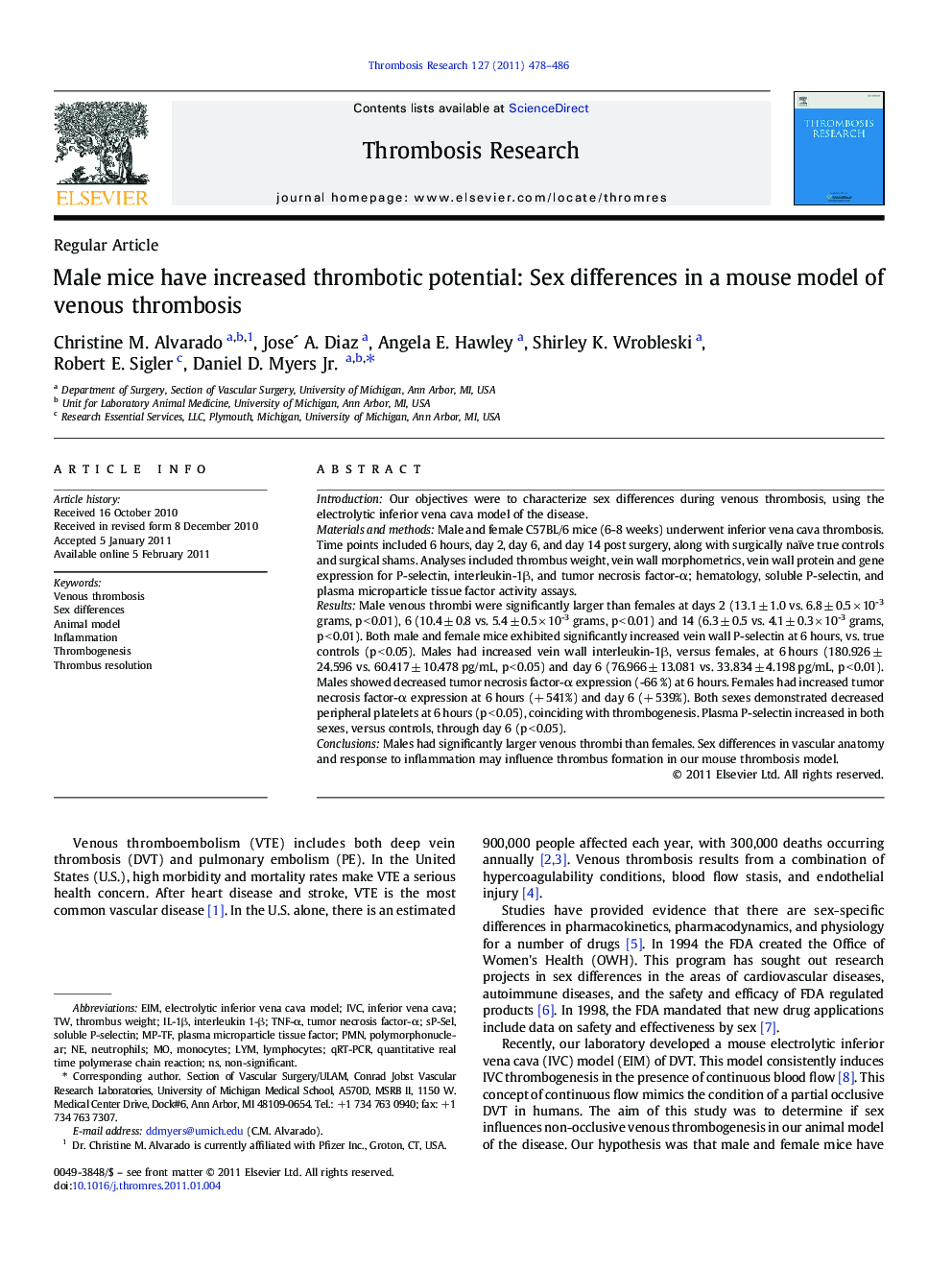| Article ID | Journal | Published Year | Pages | File Type |
|---|---|---|---|---|
| 3029030 | Thrombosis Research | 2011 | 9 Pages |
IntroductionOur objectives were to characterize sex differences during venous thrombosis, using the electrolytic inferior vena cava model of the disease.Materials and methodsMale and female C57BL/6 mice (6-8 weeks) underwent inferior vena cava thrombosis. Time points included 6 hours, day 2, day 6, and day 14 post surgery, along with surgically naïve true controls and surgical shams. Analyses included thrombus weight, vein wall morphometrics, vein wall protein and gene expression for P-selectin, interleukin-1β, and tumor necrosis factor-α; hematology, soluble P-selectin, and plasma microparticle tissue factor activity assays.ResultsMale venous thrombi were significantly larger than females at days 2 (13.1 ± 1.0 vs. 6.8 ± 0.5 × 10-3 grams, p < 0.01), 6 (10.4 ± 0.8 vs. 5.4 ± 0.5 × 10-3 grams, p < 0.01) and 14 (6.3 ± 0.5 vs. 4.1 ± 0.3 × 10-3 grams, p < 0.01). Both male and female mice exhibited significantly increased vein wall P-selectin at 6 hours, vs. true controls (p < 0.05). Males had increased vein wall interleukin-1β, versus females, at 6 hours (180.926 ± 24.596 vs. 60.417 ± 10.478 pg/mL, p < 0.05) and day 6 (76.966 ± 13.081 vs. 33.834 ± 4.198 pg/mL, p < 0.01). Males showed decreased tumor necrosis factor-α expression (-66 %) at 6 hours. Females had increased tumor necrosis factor-α expression at 6 hours (+ 541%) and day 6 (+ 539%). Both sexes demonstrated decreased peripheral platelets at 6 hours (p < 0.05), coinciding with thrombogenesis. Plasma P-selectin increased in both sexes, versus controls, through day 6 (p < 0.05).ConclusionsMales had significantly larger venous thrombi than females. Sex differences in vascular anatomy and response to inflammation may influence thrombus formation in our mouse thrombosis model.
